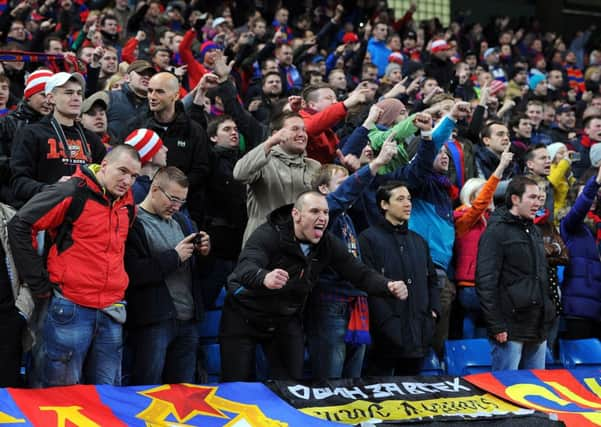John Leech: Safe way to stand up for your football heroes


In the report, Lord Justice Taylor said: “There is no panacea which will achieve total safety and cure all problems of behaviour and crowd control. But I am satisfied that seating does more to achieve those objectives than any other single measure.”
He went on to say: “It is obvious that sitting for the duration of the match is more comfortable than standing. It is also safer. When a spectator is seated he has his own small piece of territory in which he can feel reasonably secure. He will not be in close physical contact with those around him. He will not be jostled or moved about by swaying or surging.”
Advertisement
Hide AdAdvertisement
Hide AdI cannot disagree with any of those observations. They were made at a time when football grounds were very different from the grounds of today, but at the same time I do not think that anyone who advocates the reintroduction of official standing areas at football grounds is seriously suggesting a return to vast terraces.
Where Lord Justice Taylor got it wrong was the assumption that everyone would get used to sitting at football. At every all-seater ground, up and down the country, persistent standing remains a part of the game every week.
That is why there have been continued calls for the introduction of “safe standing” areas, and in March 2011 the Football Supporters Federation launched a campaign, including an online petition, arguing that supporters should have the choice to stand. The campaign has gained significant momentum, so much so that at the Football League’s annual meeting, more than two thirds of the 72 clubs voted in favour of a motion to explore safe standing trials.
There is overwhelming support from supporters for the campaign; in the FSF national supporter survey in 2009, almost 90 per cent of respondents believed that supporters should have the choice of sitting or standing, with more than five per cent preferring to stand. By 2012, 92 per cent of respondents wanted the choice, including 82 per cent of women.
Advertisement
Hide AdAdvertisement
Hide AdI recognise that support for this approach is not universal among fans. Margaret Aspinall, chair of the Hillsborough Family Support Group, has argued: “Standing should never, ever come back. I do not think there is anything safe about standing.”
But the reality is that standing has never gone away. There has been abject failure on the part of the authorities to persuade fans to sit down in some sections.
The problem is two-fold. First, thousands of fans standing in areas designed for sitting down is not as safe as it should be. Secondly, we seem to have forgotten the need for football grounds to be accessible for all. Some people, while not confined to a wheelchair and not considered to be disabled, are still not able to stand for a whole game and need to sit down.
What is the solution? It is rail seating, which is basically a seat that is attached to a rail or barrier. Rail seats are used in many football grounds across Europe, in countries that allow standing for domestic matches, and then convert the standing areas to seating for European games in line with Uefa rules on all-seater stadiums for European matches.
Advertisement
Hide AdAdvertisement
Hide AdFor domestic games, those rail seats are permanently locked in the upright position, and everyone stands, which increases capacity. For European games, the seats are permanently locked in the seat position and the number of fans allowed into an area is one for each seat. That system is safe and creates a great footballing atmosphere, cheaper tickets and ensures that other areas of the ground with standard seating are occupied by people who want to sit down, and do not stand and block the view of others.
The easy solution is to designate each spectator a specific seat-cum-standing position in the rail-seating area, in the same way as they are currently allocated a seat.
My proposal is that rail seating should be allowed at clubs, without the seats being locked in either the open or closed position. That creates a seat for each spectator in exactly the same way as any other seat in the ground. The difference is that as well as being a seat, the rail seating provides a safety barrier in front of each row. That means that when people are standing up, they are safer than they currently are when standing in existing seats.
This is not an issue of safety. I have already outlined why safety would be enhanced rather than compromised by rail seating. It is about political will. Politicians must wake up to the fact that standing will continue and rail seating is the solution that will improve safety and enhance choice for fans. That is why it is Liberal Democrat policy and why the other parties need to recognise that the status quo cannot be allowed to continue.
* John Leech is the Lib Dem MP for Manchester Withington who spoke in a Commons debate on football safety. This is an edited version of his speech.